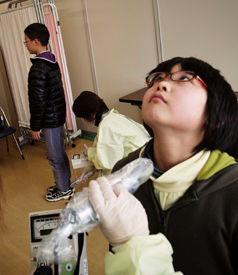
© Orion Magazine
When my husband and I set out to find a nursery school for our daughter, Faith, nearly ten years ago we took the decision seriously. I looked at large parent-run cooperatives and visited small home-based operations. Jeff studied the pink towers and chiming bells at the Montessori school on the hill and considered the wonder balls and wooden fairies at the Waldorf school in the valley. In the end, we chose a nursery school that operated out of a community center close to home. There was a frog pond out front and a play structure out back. The trees were full of chickadees and nuthatches. We had weighed many considerations in the decision-making process, and we all, Faith included, were happy about it.
That is, until I discovered that, like many of its kind, the school's beloved play structure - with its wooden gangway, turrets, and tunnels - was made out of pressure-treated lumber, which, at the time, contained arsenic, a carcinogen. A bladder carcinogen, in fact. I am a bladder cancer survivor. I am familiar with this particular disease and all the ongoing medical surveillance it requires. So, after a lot of research and discussion, we eventually decided to move our daughter to a different nursery school. The risk of doing nothing just seemed too high.
Seven years later, the Environmental Protection Agency released its final risk assessment for children who regularly contact wood impregnated with chromated copper arsenate. The conclusion: children who play frequently on pressure-treated play sets and decks (we had one of those, too) experience, over their lifetimes, elevated cancer risks. Ergo, our precautionary decision as parents to dis-enroll our daughter had been a wise one. And yet, because the EPA stopped short of recalling pre-existing play structures and decks when it outlawed arsenic-treated lumber for residential use in 2004, the old play structure at our old nursery school still stands.

